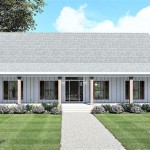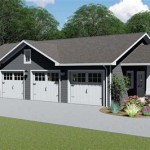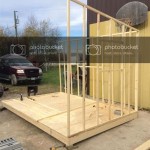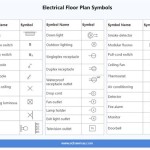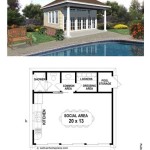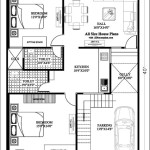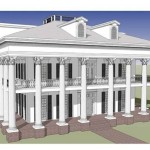Farmhouse House Plans With Basement: Expanding Space and Style
Farmhouse style architecture evokes a sense of rustic charm, comfort, and connection to nature. Characterized by gabled roofs, wide porches, and often board-and-batten siding, farmhouse designs prioritize functionality and a relaxed aesthetic. Integrating a basement into a farmhouse plan amplifies the home's usability, offering extra living space, storage solutions, and potential for various specialized areas. This article explores the benefits, design considerations, and common features associated with farmhouse house plans that incorporate a basement.
The combination of a farmhouse design and a basement requires careful planning to ensure structural integrity, proper drainage, and seamless integration with the overall aesthetic. Factors such as the local climate, soil conditions, and intended use of the basement heavily influence the design process. Successfully executed, a farmhouse with a basement provides a distinctive blend of traditional appeal and modern practicality.
Benefits of Incorporating a Basement into Farmhouse Plans
Adding a basement to a farmhouse plan brings a multitude of advantages. The additional square footage significantly expands the living area, catering to growing families or homeowners seeking specialized spaces. Basements also provide a cost-effective way to enlarge a home's footprint without drastically altering the exterior appearance of the farmhouse design.
One of the primary benefits is the provision of ample storage space. Farmhouses often require significant storage for seasonal items, gardening tools, or preserved goods. A basement offers a dedicated area to keep these items organized and out of sight, maintaining the clean and uncluttered appearance characteristic of modern farmhouse aesthetics. This storage capacity is particularly valuable for those who embrace the traditional aspects of farmhouse living, such as canning and preserving.
Beyond storage, a basement can be transformed into various functional living spaces. Home theaters, recreational rooms, home gyms, or even guest suites become feasible additions, enhancing the home's entertainment and accommodation capabilities. When designed with proper egress windows and ventilation, basements can meet building codes as habitable living spaces, thereby increasing the home's resale value.
Furthermore, a basement can serve as a safe haven during severe weather events. Underground construction provides a natural barrier against strong winds and other hazards. For regions prone to tornadoes or hurricanes, a well-constructed basement offers a designated shelter area, adding a layer of safety and security for the occupants.
From a technical standpoint, a basement provides easy access to essential utilities such as plumbing, electrical wiring, and HVAC systems. This accessibility simplifies maintenance and repairs, reducing the need to disrupt the main living areas when addressing technical issues. The placement of utility systems in the basement also frees up space on the main floor, allowing for more flexible design options.
Finally, basements contribute to improved energy efficiency. The earth surrounding the basement walls provides insulation, helping to regulate the temperature inside the home. This natural insulation reduces heating and cooling costs, particularly in regions with extreme temperature fluctuations, making the farmhouse more environmentally friendly and cost-effective to operate.
Design Considerations for Farmhouse Plans With Basements
Designing a farmhouse with a basement requires careful attention to several key elements. Ensuring proper drainage is paramount to prevent water damage and maintain the structural integrity of the foundation. Grading the land around the house to direct water away from the foundation is crucial. Installing a comprehensive drainage system, including perimeter drains and sump pumps, further mitigates the risk of water intrusion. Proper waterproofing of the basement walls is also essential, employing materials and techniques that create a barrier against moisture penetration.
Egress windows are another critical consideration, particularly if the basement is intended for habitable living space. These windows provide an emergency exit in case of a fire or other emergency. Egress windows must meet specific size and placement requirements outlined in building codes. Ensuring compliance with these regulations is essential for the safety of the occupants and to meet legal requirements for habitable basement spaces.
Ventilation is equally important for maintaining air quality and preventing moisture buildup in the basement. Proper ventilation systems, including exhaust fans and dehumidifiers, help to remove excess moisture and circulate fresh air. This prevents the growth of mold and mildew, creating a healthier and more comfortable environment. Well-ventilated basements are less prone to dampness and musty odors, enhancing the overall living experience.
Lighting is often overlooked in basement design, but it plays a significant role in creating a welcoming and functional space. Natural light is often limited in basements, so artificial lighting must be carefully planned. Recessed lighting, task lighting, and accent lighting can be strategically placed to brighten the space and highlight specific features. Using light-colored paint and reflective surfaces can also help to maximize the available light and create a more open and airy feel.
The style and finish of the basement should complement the overall farmhouse aesthetic. Using natural materials such as wood and stone can help to create a cohesive look. Exposed beams, shiplap walls, and rustic hardware can add character and charm to the basement space. Integrating farmhouse-style furniture and decor further enhances the overall design, creating a seamless extension of the main living areas.
The staircase leading to the basement should be designed to be both functional and aesthetically pleasing. A well-designed staircase can serve as a focal point, adding visual interest to both the main floor and the basement. Using natural wood and incorporating farmhouse-style details, such as wrought iron railings, can create a seamless transition between the two levels.
Finally, consider the local building codes and regulations when designing a farmhouse with a basement. Compliance with these codes is essential to ensure the safety and legality of the construction. Consulting with a qualified architect or builder is advisable to navigate the complexities of building codes and ensure that the design meets all applicable requirements.
Common Features in Farmhouse Plans With Basements
Farmhouse plans with basements often incorporate specific features tailored to enhance the functionality and aesthetic appeal of the home. These features vary depending on the homeowner's individual needs and preferences, but some common elements are frequently observed.
One popular feature is a finished basement with dedicated living areas. This may include a family room, home theater, game room, or home office. These spaces provide additional living areas for relaxation, entertainment, or work, enhancing the overall functionality of the home. Finished basements are typically designed with comfortable seating, ample lighting, and integrated entertainment systems, creating a welcoming and inviting atmosphere.
Another common feature is a basement guest suite. This self-contained living area provides privacy and comfort for visiting guests. Guest suites typically include a bedroom, bathroom, and sitting area, offering a comfortable and convenient space for overnight stays. Guest suites can also be equipped with a kitchenette, providing guests with the ability to prepare their own meals and snacks. A separate entrance to the basement can enhance the privacy and independence of the guest suite.
A basement workshop or hobby room is another frequently requested feature. This dedicated space provides a place for pursuing hobbies, crafts, or DIY projects. Workshops are typically equipped with workbenches, storage cabinets, and specialized tools, allowing homeowners to engage in their favorite activities without disrupting the main living areas. Hobby rooms can be customized to suit a wide range of interests, from woodworking and painting to sewing and model building.
Wine cellars are becoming increasingly popular in farmhouse plans with basements. These climate-controlled spaces provide optimal storage conditions for wine collections. Wine cellars are typically designed with specialized racks and shelving, maintaining a consistent temperature and humidity level to preserve the quality of the wine. Wine cellars can also include a tasting area, providing a space for enjoying and sharing wine with friends and family.
Storm shelters or safe rooms are another important feature to consider, especially in regions prone to severe weather. These reinforced spaces provide a secure refuge during tornadoes, hurricanes, or other hazardous events. Storm shelters are typically constructed with concrete walls and ceilings, offering protection from flying debris and strong winds. They are also equipped with emergency supplies, such as water, food, and first-aid kits.
Finally, many farmhouse plans with basements include a mudroom or drop zone near the basement entrance. This transitional space provides a place to remove and store shoes, coats, and other outdoor gear. Mudrooms help to keep the main living areas clean and organized, preventing dirt and clutter from being tracked inside. They are typically equipped with benches, storage cabinets, and hooks, providing a convenient and functional space for managing everyday clutter.

Modern Farmhouse Plan W Walkout Basement Drummond House Plans

Farmhouse Style House Plan 4 Beds 2 5 Baths 2686 Sq Ft 430 156 Houseplans Com

Exclusive Modern Farmhouse Plan With Optional Walk Out Basement 910073whd Architectural Designs House Plans
:max_bytes(150000):strip_icc()/SL-2064-honeycomb-farmhouse-678f8426014242dca0b202b171332a76.jpg?strip=all)
House Plans With Basements Made For More Low Key Family Time

Modern Farmhouse Floor Plan 3 Bedrms 5 Baths 1892 Sq Ft 205 1231

Walkout Basement Farm House Style Plan 8821

Aspen Hill House Plan Modern Farmhouse Craftsman

Farmhouse Style House Plan 4 Beds 5 Baths 2743 Sq Ft 51 1149 Houseplans Com

Small Farmhouse Plans Fit For Fall Blog Eplans Com

Small Cottage Plan With Walkout Basement Floor


